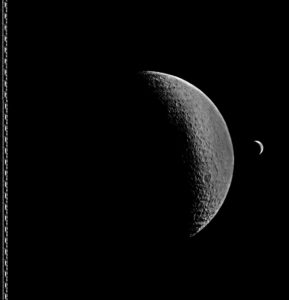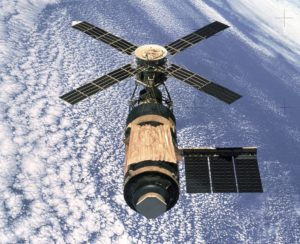May 11, 1967: Lunar Orbiter 4 begins photographing the Moon

Image taken by Lunar Orbiter 4, showing the Moon with Earth in the background | NASA/LOIRP
Lunar Orbiter 4 was robotic craft launched as part of NASA’s Lunar Orbiter Program. The orbiter was the fourth in a series of crafts designed to orbit the Moon, after the three previous orbiters had gathered the needed mapping and site selection for the Apollo Moon Mission. Lunar Orbiter 4 was launched from Cape Canaveral on May 4, 1967 aboard the Atlas-Agena rocket, which was also used to launch the first four probes of the Mariner program. The orbiter entered lunar orbit six days later on May 11, 1967, and began taking photographs of the lunar surface and sending them back to mission control. A total of 419 high-resolution and 127 medium-resolution photos were acquired, covering 99% of the Moon’s nearest side to Earth.

An overhead view of the Skylab Orbital Workshop, taken from the Skylab 4 Command and Service Modules (CSM) | NASA
May 14, 1973: Skylab launched
Skylab was the first space station launched by NASA, and continues to be the only space station operated solely by the United States. It was launched from the Kennedy Space Center on May 14, 1973, aboard a modified Saturn V rocket. Its internal operations included a solar observatory, an orbital workshop, an Earth observatory, and a laboratory that accommodated hundreds of experiments at a time. Skylab remained in orbit for a total of 2249 days, but was only occupied for 171 of them. Throughout its mission, the space station completed 34,981 orbits around the Earth and traveled a staggering 890,000,000 miles before its orbit decayed and it disintegrated into the atmosphere on July 11, 1979. Debris from the space station was scattered across the Indian Ocean and parts of Western Australia.